An introduction to steel residential construction
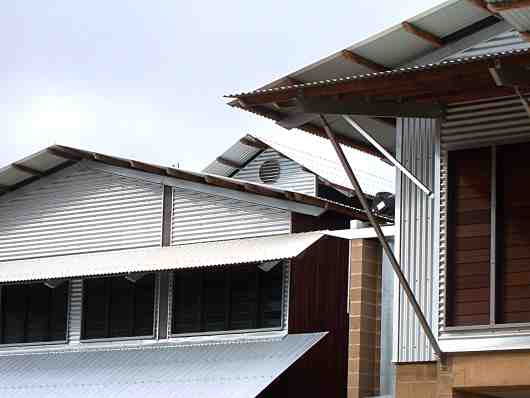 |
| Steel residential construction - Houses with steel roofs and some steel walls |
Why use steel residential construction.
Take a drive around any industrial area in the world and look at the main materials used on large buildings. The warehouses, the factories. Fairly obvious, it is going to be steel. For everything but the concrete floors. "So what has this gotta do with my new house"? You may ask, you don't want to build an aircraft hanger. Well....... I'll give you the drum!
With the demand for larger cost effective structures, there has been an ever increasing surge of development and competition to provide stronger, lighter, cheaper materials. These materials like the dozens of standard steel sections, the incredibly efficient "Z" purlins, etc. etc. are starting to be taken up by the home building industry in a big way.
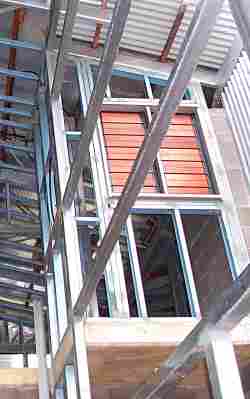 |
| Steel residential construction - Combination of roll formed steel stud wall frames and RHS sections to provide external walls. |
In my fifty years or so in the building and construction industry, I have seen the use of steel residential construction increase from almost nothing to in many cases approaching almost 100%. I am a carpenter by trade and while I clearly have a love of working with timber, in my design and building work I have to use steel, because of it's many benefits.
Considering where I live, in a cyclone prone area, this is not surprising, the need for increased strength has been the driving force, but also architects have long appreciated the flexibility of design that steel provides. We don't have to live in concrete "bunkers" or "dog boxes" any more, just because we get severe weather.
I often say that we are overly regulated, but in respect of building regulations, regarding strength and living amenity, I am all for them. In fact if anything over the years I have always erred on the side of extra strength, and I would suggest that any prudent home builder or renovator consider upping the strength of their next project. It may not be strictly necessary, but in this age of extreme weather events it is comforting to know that your family is as safe as possible. I've been there and done that!
Back to top.
Where do we find steel in modern residential construction.
Easy answer, just about everywhere.
Slightly longer answer below.
- Concrete foundations and raft slabs in most houses contain a few tonnes of rebar or reinforcing steel, nicely hidden away but never the less doing an excellent job.
- Houses raised off the ground use steel columns, steel floor bearers and in many cases steel floor joists. (As in steel purlins).
- Steel residential wall framing is extremely strong, lightweight and very cost effective. The system of bracing it is simple and strong. It can take all the traditional siding, cladding or sheeting materials.
- The wall framing itself can incorporate steel RHS (rectangular hollow sections) around openings to provide extra strength, which carry the roof loads to the foundations.
- Whatever the type of wall construction, the roof structure almost always has some steel in it, be it a couple of steel beams over patios, bolts and angle brackets to conventional timber or truss framing.
- More often we are seeing complete steel truss layouts, with steel battens and steel roof sheeting.
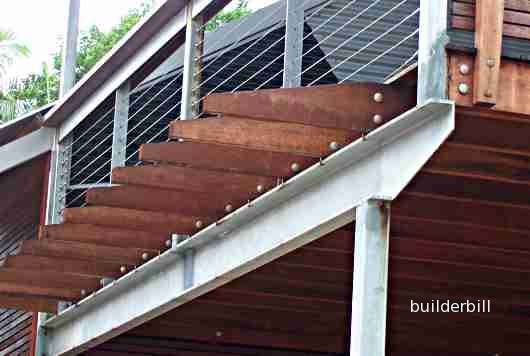 |
| Steel residential construction - A steel PFC external deck beam. |
The above shot shows an external deck, with a steel PFC (parallel flange channel) sat on SHS (square hollow section) steel columns. The handrail supports (some of them extending up to support the roof) are also SHS. The corrosion protection system is hot dip galvanising. The balustrade wires are SS (stainless steel).
Back to top.
Benefits of using steel over other materials.
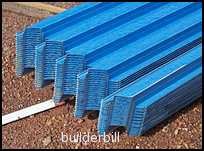 |
| Steel residential construction - A stack of steel roof battens, they are cheaper, straighter, longer, less waste, lighter, easier and quicker to fix than the hardwood 3"x2" that they have replaced. |
I will just list a few generalisations here, and go into more detail on the other pages in this section.
- Steel has the highest strength to weight ratio of all the other comparable building materials. There are materials that are stronger, lighter, corrosion proof etc. but we are talking about houses here, not Stealth Bombers.
- Section size, for a given span and loading, a steel section will take up less space. It may be a steel beam like the one above, that because of it's less depth than a timber beam doing the same job, will give greater head height. Also compared to timber it takes up less space in transport.
- Weight, The cold rolled, or roll formed lighter sections, for example, wall frame studs and plate, fascias, ceiling and roof battens are sometimes many times lighter than the timber that they replace.
- Length, steel comes in stock lengths, but the ability to weld sections together, with sometimes invisible joins, means that long continuous lengths are possible in the average house. Giving greater spanning capacity over supports. Again with roll formed sections the manufacturers produce the product in lengths to suit a typical job, and the available transport. For example, a popular wall frame height is 2700mm. So the roll formers produce standard lengths of 8100mm to get three studs out of a length with no waste. They will of course produce it longer or shorter if the need is there. I once fixed two steel fascias that were 22M long. No joins, rolled on site.
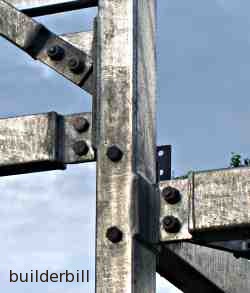 |
| Steel residential construction - Steel connection detail, steelwork prefabricated off site and galvanised before fixing. |
- Fire resistance. A fairly obvious advantage over timber.
- Termite resistance. A real advantage where I live, but also in many parts of the world.
- Low wastage. Because of the ability to weld steel sections, small lengths are not thrown away. Most welding shops have piles of offcuts that are regularly picked through for small jobs or for adding to longer lengths. All this apart, when steel does get thrown out, it is still recyclable. Many times with timber we have bought longer lengths, knowing that we would be throwing maybe 20% to waste, because the correct size was not available.
- Stable Because it is inorganic, steel will not rot, shrink,twist or split. For the most part all steel sections and made up components will retain their shape during the building process and after. They will not rack out of square and their joints will not loosen up.
- Steel residential construction lends itself to prefabrication for remote housing locations and also is adaptable to total on site fabrication.
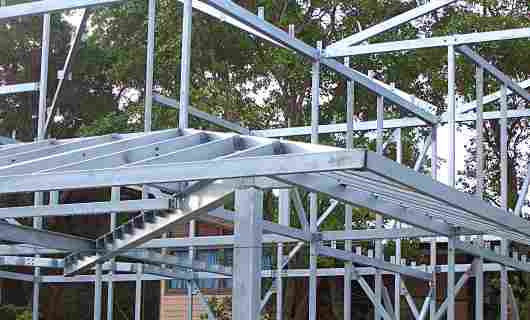 |
| Steel residential construction - The whole of this complex house frame was fabricated off site, sent to be hot dip galvanised and assembled on site with crane, nuts and bolts and spanners. |
Back to top.
Some drawbacks of using steel.
- In certain locations, geographic (as in near the coast), or in the house (as in bathrooms and other wet areas), there is need for extra corrosion protection over and above the normal.
- Thermal expansion and contraction in some surfaces, especially sprung curved roofs causes loud movement noises. Similarly heavy rain noise can be intrusive.
- Aesthetics. None of us want to live in steel sheds, that's for sure, but there are enough examples of good design about, to show that houses can be built out of primarily steel materials and still be pleasing to the eye, and more importantly, pleasing to live in.
- Thermal insulation. Steel is a good conductor of heat or cold, and as such extra measures have to be taken to insulate the residence. There are many cost effective methods of doing this.
Back to top.







